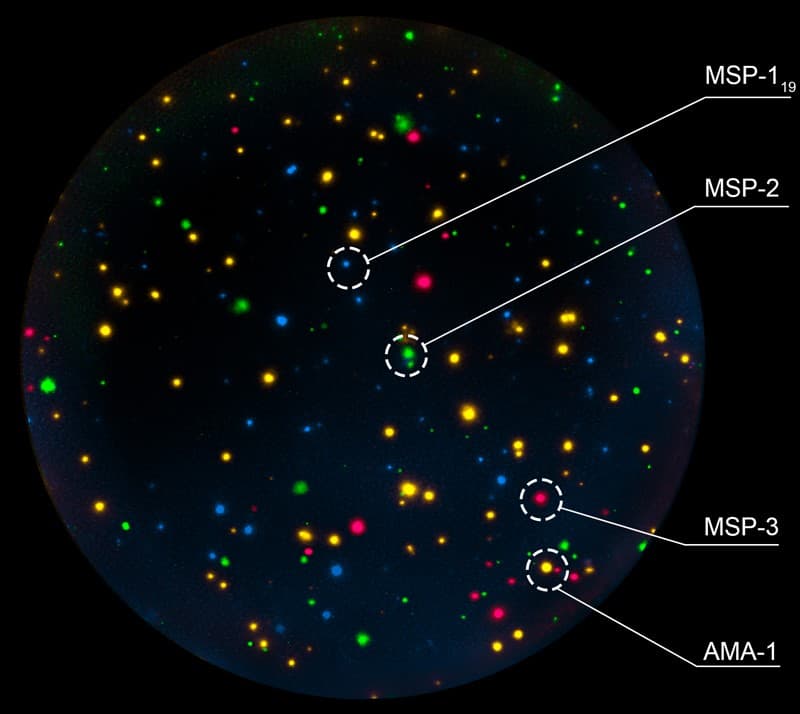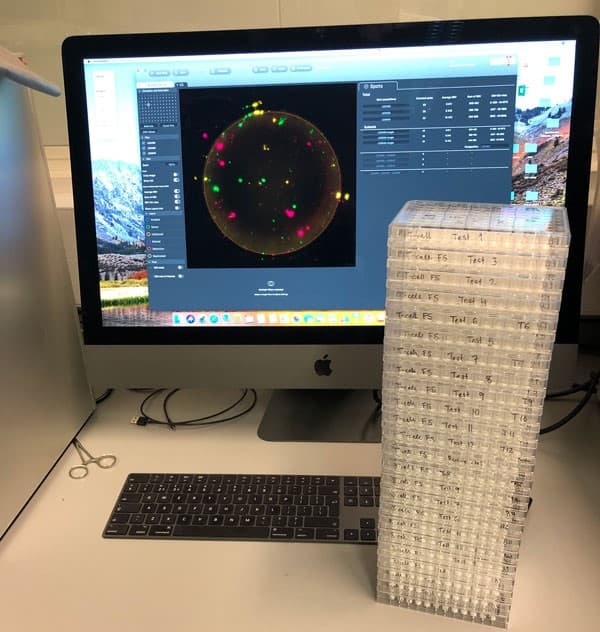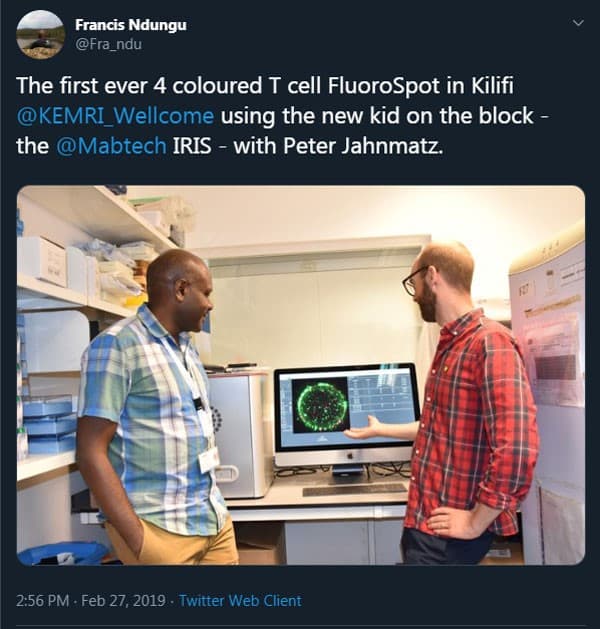
Reversed B cell FluoroSpot to study malaria-specific B cell memory
Published: January 31, 2023
Updated: March 11, 2025
3 minute read
Authored by: Jens Gertow
When working with samples from malaria-infected children, material is limited and sensitive analytical tools are therefore essential. In his search for an answer to why some individuals acquire immunity against malaria, in 2019, our co-worker Peter Jahnmatz took Mabtech IRIS™ to Kenya.
Peter, back in 2019 you were an industrial graduate student affiliated to Karolinska Institutet and Mabtech. What, precisely, was your research focus?
I was and still am very interested in malaria and how protective immunity against this disease develops. For this reason, I use a reversed B-cell FluoroSpot assay that allowed me to perform multiplex analysis of malaria-specific B cells at the single-cell level.
Wait, hold up. What is a “reversed B-cell FluoroSpot assay”?
In a reversed assay, you coat the plate with for example with an anti-IgG antibody and then detect with tag-labeled antigens followed by fluorophore-conjugated anti-tag reagents. This enables simultaneous analysis of B cells specific for multiple antigens, which is of great interest in malaria research.
Peter next to his IRIS
Multiplex analysis at the single cell level of malaria antigen-specific B cells using the reversed B-cell FluoroSpot assay. Blue spots represent B cells specific to MSP-1(19), green spots; MSP-2, yellow spots; AMA-1 and red spots; MSP-3.
So, you went to Kenya?
Yes, I travelled to Kenya in the spring of 2019 and brought IRIS with me. We studied how the immune response is affected in people naive to the malaria parasite, compared to those who have been infected. Using only 5 million PBMCs per sample, we were able to use FluoroSpot to detect B-cell reactivity to 4 different antigens simultaneously, investigate 8 cross-reactivity variants, and run T cell FluoroSpot assays to analyze IFN-γ, IL-10, IL-17A, and IL-22 responses. That is a considerable amount of data from a sample of only 5 million PBMCs.
IRIS came down a few days before me, so I could begin setting it up on my very first day. The whole thing took me a few seconds, I just plugged it in and then it was ready to go. In total I did 22 FluoroSpot assays there, eleven T cell and eleven B cell assays with my home-made malaria antigens. As said, the ultimate goal was to learn more about how immunity against the malaria parasite is developed and is maintained, but also to find factors that predicted a certain immune response.
I had previously tested the antigens and reagents back in Sweden but never with samples from children. Since I know how much time and commitment it takes to gather all those samples, I was a bit worried about the results, but in the end, it came out really good.
FluoroSpot plates stacked to summarize all of Peters work. Also, a representative well of an individual with memory B cells specific against malaria antigens.
"That is a considerable amount of data from a sample of only 5 million PBMCs"
Great to hear. It sounds like you had an overall great experience.
Yes, KEMRI (Kenya Medical Research Institute) and the people working there, including Professor Francis Ndungu, was the reason why I loved my stay. From day one I was welcomed into the group and everyone was very friendly. The Kenyan atmosphere is happy and open.
After my first successful T cell FluoroSpot assay, Francis and I celebrated it with a tweet, also announcing that KEMRI decided to keep the IRIS.
A tweet by Dr. Francis Ndungu, Supervisor and Research fellow in the Malaria Immunity division at KEMRI.



